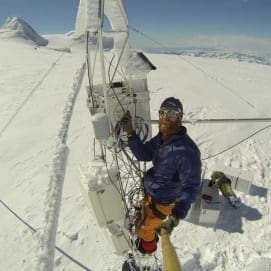As humans, we must interact with our environment. For millennia, we lived in balance with what the earth could provide and what we could take to build our societies. With the great technological developments of the 19th and 20th century, we have been freed from many of the constraints nature imposes on our activities, but this progress has come at a cost. As our population grows, urbanization increases and economies all over the world develop, putting more pressure on the sustainability of natural resources.
The impact on the environment must be mitigated to ensure a livable and just future for everyone. The good news is that all across the world dedicated professionals are working to develop more sustainable ways to utilize natural resources.
There are many approaches to making a positive impact on the environment. This article looks at three ways our everyday lives are affecting the sustainability of natural resources and tactics environmental scientists are implementing to improve those areas.
The Way We Move
The simple act of getting from here to there puts a heavy burden on our natural resources and environment. From the fossil fuels that power our vehicles, to the minerals needed for their manufacture, to the roads that encroach on sensitive habitat, transportation is a complex and multifaceted issue.
Alternative fuels like biodiesel, battery-powered electric cars, and smarter mass transit systems, offer ways to relieve the environmental pressure from our need for transportation. The biggest challenge, however, lies in developing the infrastructure to deliver these advances to where they’re needed. For example, nearly 170,000 gas stations are scattered across the U.S., while just over 16,000 electric charging stations exist nationwide. Connecting tomorrow’s electric vehicles to a robust and sustainable electric grid poses a massive opportunity for energy companies. Those companies that can manage to power our electric vehicle fleet with renewables stand to make a positive impact on the sustainability of natural resources.
On an individual level, we’ll benefit from better urban planning and improved public transportation. As technology advances, driverless vehicles are promising more efficient forms of transportation, and ever-increasing connectivity with smartphones makes living without a car easier than ever.
Unity’s M.S. in Sustainable Natural Resource Management is producing tomorrow’s leaders who will have a wide selection of tools to choose from when it comes to addressing the issues transportation poses.
The Way We Build
The world’s need for goods, both durable and disposable, will never cease. As a consequence, the manufacturing industry is a major driver of natural resource depletion and environmental degradation. The manufacture and delivery of consumer goods accounts for a whopping 60 percent of global greenhouse emissions.
What can be done? The good news is the manufacturing sector is making big strides toward a more sustainable future, mainly as a response to consumers demanding that industry deliver goods more sustainably. Through alliances and partnerships, manufacturers are creating new business tools to reduce carbon footprints. Many companies realize that “greening” up their manufacturing processes leads to increased profits and long-term sustainability in the face of dwindling natural resources.
Governments will play a prominent role in changing how we manufacture everything from our homes to the products we buy in stores. Countries like Australia are leading that charge with its commitment to using only sustainable packaging by 2025 and has pledged to dramatically increase the use of recycled goods in government projects like road building.
The Way We Eat
Food production is critical to our survival. When appropriately managed, farmland can support ecosystems, restore soil health, and provide clean water to watersheds. However, many of our global farming practices are not sustainable, contributing to the degradation of the environment through soil erosion, habitat loss, and water waste. As a response, farmers all over the world are committing to the goal of sustainable agriculture. They aim to meet our food needs today without limiting future generation’s ability to do the same.
The good news is farmers are thinking and acting more sustainably. The Organisation for Economic Co-operation and Development reports global productivity of food production is increasing while the overall environmental impact is decreasing. The downside is that this productivity is unlikely to last in the face of climate change unless policies are aligned to generate innovation and investment in sustainable agricultural practices.
To address global food security, farmers must look to alternative crops and methods to meet the needs of a growing population. For example, growing soybeans is significantly more efficient than other crops at delivering protein. A ton of soybeans uses less than half the water required to produce a ton of pork.
Forward-looking farmers are continually refining and improving their farming techniques. Cultivation, planting, harvesting, and plowing all use vast amounts of fossil-fuel, yet each step of the process has the potential to yield significant improvements in the sustainability of natural resources.
In addressing these core areas of human activity–transportation, manufacturing, and agriculture–we can bring about positive changes in the way we interact with the environment.
With Unity’s Online Master’s in Professional Science, you can get the educational preparation to join the ranks of these forward-thinking scientists, policymakers, and sustainability experts.
Learn more about Unity College by visiting online.unity.edu/learn-more/ or call 1-833-UnityGO.



